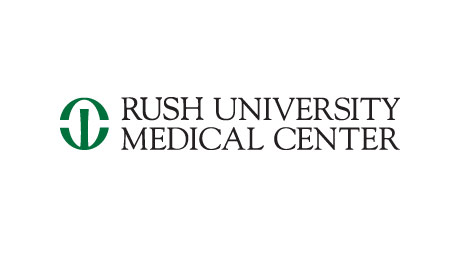Investigation of Intravenous Tranexamic Acid With Anatomic and Reverse Total Shoulder Arthroplasty
| Status: | Recruiting |
|---|---|
| Healthy: | No |
| Age Range: | Any |
| Updated: | 4/23/2016 |
| Start Date: | September 2015 |
| End Date: | June 2017 |
| Contact: | Yale A Fillingham, MD |
| Email: | yale_fillingham@rush.edu |
| Phone: | 312-942-6000 |
Investigation of the Blood Sparing Properties of Intravenous Tranexamic Acid With Anatomic and Reverse Total Shoulder Arthroplasty
To compare intravenous Tranexamic Acid (TXA) versus normal saline placebo to determine
whether or not TXA administration reduces blood loss, decrease in hemoglobin, and rate of
transfusions following anatomic and reverse total shoulder arthroplasty (TSA) surgeries.
whether or not TXA administration reduces blood loss, decrease in hemoglobin, and rate of
transfusions following anatomic and reverse total shoulder arthroplasty (TSA) surgeries.
Anatomic and reverse total shoulder arthroplasty (TSA) is associated with the risk of
moderate to significant blood loss that can lead to transfusions. Average estimated blood
loss has been reported in the range of 354 to 361 mL intraoperatively, not accounting for
additional postoperative blood loss postoperatively in surgical drains. Transfusion rates
have been reported to range from 2.4% to 9.5% in recent studies, with rates over 30% for
revision cases. Tranexamic acid (TXA) is a synthetic antifibrinolytic agent that is an
established method of reducing blood loss and transfusion requirement for patients
undergoing total hip and knee arthroplasty. TXA can be administered intravenously, topically
(intraarticularly), or orally, with most available literature addressing intravenous and
topical administration. Systematic reviews and meta-analyses of the total hip and knee
arthroplasty literature demonstrate approximately a 30% decrease in blood loss and 50%
decrease in transfusion rate with topical or intravenous administration of TXA compared to
placebo. Moreover, the literature demonstrates no increased rate of thromboembolic or other
complications associated with TXA administration for hip and knee arthroplasty.
Despite proven efficacy in the hip and knee arthroplasty literature, there have been no
studies analyzing the ability of TXA to reduce blood loss and transfusion rate following
TSA.
Purpose of the study is to compare intravenous Tranexamic Acid (TXA) versus normal saline
placebo to determine whether or not TXA administration reduces blood loss, decrease in
hemoglobin, and rate of transfusions following anatomic and reverse total shoulder
arthroplasty (TSA) surgeries. With the hypothesis that intravenous TXA will reduce blood
loss following TSA.
moderate to significant blood loss that can lead to transfusions. Average estimated blood
loss has been reported in the range of 354 to 361 mL intraoperatively, not accounting for
additional postoperative blood loss postoperatively in surgical drains. Transfusion rates
have been reported to range from 2.4% to 9.5% in recent studies, with rates over 30% for
revision cases. Tranexamic acid (TXA) is a synthetic antifibrinolytic agent that is an
established method of reducing blood loss and transfusion requirement for patients
undergoing total hip and knee arthroplasty. TXA can be administered intravenously, topically
(intraarticularly), or orally, with most available literature addressing intravenous and
topical administration. Systematic reviews and meta-analyses of the total hip and knee
arthroplasty literature demonstrate approximately a 30% decrease in blood loss and 50%
decrease in transfusion rate with topical or intravenous administration of TXA compared to
placebo. Moreover, the literature demonstrates no increased rate of thromboembolic or other
complications associated with TXA administration for hip and knee arthroplasty.
Despite proven efficacy in the hip and knee arthroplasty literature, there have been no
studies analyzing the ability of TXA to reduce blood loss and transfusion rate following
TSA.
Purpose of the study is to compare intravenous Tranexamic Acid (TXA) versus normal saline
placebo to determine whether or not TXA administration reduces blood loss, decrease in
hemoglobin, and rate of transfusions following anatomic and reverse total shoulder
arthroplasty (TSA) surgeries. With the hypothesis that intravenous TXA will reduce blood
loss following TSA.
Inclusion Criteria:
- Any patient scheduled for a primary anatomic or reverse TSA
Exclusion Criteria:
- Allergy to TXA
- Acquired disturbances of color vision
- Pre-op use of anticoagulant therapy within five days before surgery
- History of arterial or venous thromboembolic disease; such as DVT, PE, CVA, TIA
- Pregnancy or breastfeeding
- Recent MI (within 6 months of surgery) or any placement of stent regardless of time
since placement
- Renal impairment
- Refusal of blood products
- Any patient undergoing a revision TSA
- Patients who decline to participate
We found this trial at
1
site
1653 W. Congress Parkway
Chicago, Illinois 60612
Chicago, Illinois 60612
(312) 942-5000

Phone: 312-942-6000
Rush University Medical Center Rush University Medical Center encompasses a 664-bed hospital serving adults and...
Click here to add this to my saved trials